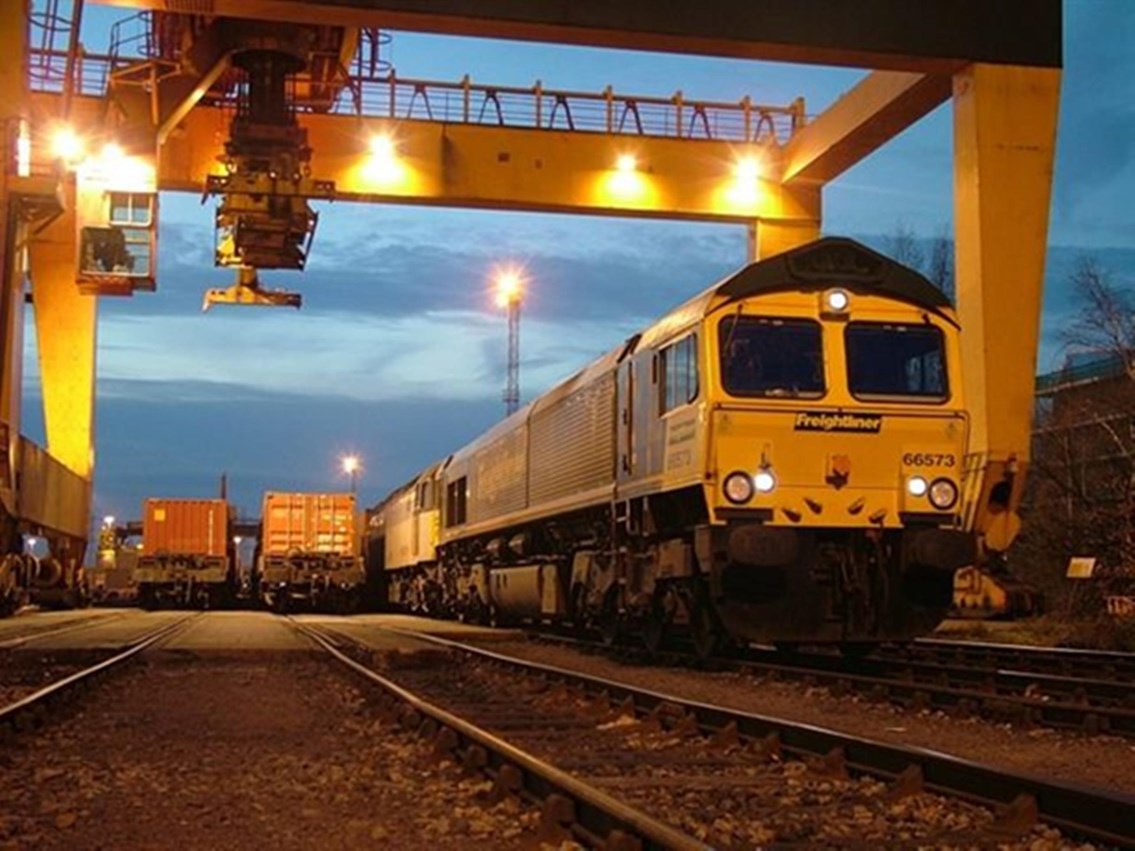Monday 18 Apr 2011
RAIL FREIGHT UPGRADE COMPLETE AS OXFORD ROAD REOPENS
- Region & Route:
- | Wales & Western: Western
- | Wales & Western
Old Abingdon Road in South Hinksey reopens this week, marking the completion of Network Rail’s project to get up to 50,000 lorries a year off the region’s roads and onto the railway.
The £60m scheme has seen engineers working at locations from the port of Southampton through the Thames Valley and up to Nuneaton in the West Midlands, creating extra headroom through tunnels and under bridges for bigger 9’6” freight containers to be transported by rail.
Engineers have been working at the Old Abingdon Road Redbridge site since November, with the old bridge removed over Christmas and a new one lifted into place in sections in January and February. The approach road on either side has also been rebuilt to meet the height of the new bridge.
Mindful of the impact of the closure on residents, Network Rail has worked with its contractors to ensure the bridge reopens on time, with some final touches including brickwork and cladding to be carried out once the bridge has reopened.
The road will open to traffic on Friday 22 April, two days later than planned – a feat in itself given the setbacks caused by the unprecedented cold weather which saw temperatures at the site plummet as low as minus 18 degrees Celsius in December.
Graham Beal, Network Rail project manager, said: “The A34 is one of the most congested roads in the country and much of the traffic is HGVs transporting goods to and from Southampton port. With the cost of road congestion to the British economy estimated at more than £10bn a year, this freight upgrade will provide vital extra capacity to get freight off Oxfordshire’s roads and onto the railway.
"I’d like to thank the people of Oxford for their patience and understanding while we carry out this important work which will benefit the city for decades to come."
Notes to editors
About the scheme
The route will take freight trains from Southampton to the West Coast Main Line near Nuneaton, via Winchester, Basingstoke, Didcot, Oxford, Banbury, Leamington Spa and Warwick. Improvement works have been carried out along this route to structures which were not large enough for high-cube containers to pass through. This work was completed in March 2011.
The current freight container market is seeing a significant growth in the percentage of ‘high cube’ containers. The usage of 9’ 6” containers currently stands at over 40%. This is expected to rise to between 50% and 70% by 2019.
Network Rail, in partnership with the passenger and freight train operators, has consulted with a range of individuals and organisations, including Oxfordshire County Council, Oxford City Council and local politicians throughout the planning of these projects.
Vehicles off the road
It is estimated this scheme will enable the transfer of up to 50,000 container freight journeys a year from the Britain’s roads to the railway. This will help reduce carbon emissions and ease traffic congestion on the road network.
Environment
Rail is also one of the most environmentally friendly forms of transport. Road freight generates six times more carbon dioxide than rail freight for each tonne moved, so the greater transfer of freight from road to rail as a result of this scheme will lead to a significant reduction of carbon emissions.
Efficiency
High cube containers are larger than standard containers, and therefore more items can be transported within them, making them a more efficient means of distributing goods. Rail can be a cheaper, quicker and a more practical way for businesses to transport their goods around the country and beyond. At present high cube containers are too big to be carried on standard height platform wagons on much of the rail network. Therefore the only way to carry them by rail is on special low wagons. However, this reduces efficiency and capacity by up to 33%.
Economic growth
The upgraded rail freight link will improve the competitiveness and encourage economic growth within the South East region. This project will also make it easier to import and export goods, helping Britain compete more effectively in the global market.
FUNDING
Funding for this project was provided by the Department for Transport via a Transport Innovation Fund TIF(P) grant. Additional funding was provided by South East England Development Agency, Associated British Ports, DP World Southampton, Advantage West Midlands, European Regional Development Fund and the Network Rail Discretionary Fund.
The project has been delivered more than £11.5m under the original £71m budget, largely as a result of the innovative approach used to lower the tracks through Southampton Tunnel.
Contact information
Passengers / community members
Network Rail national helpline
03457 11 41 41
Latest travel advice
Please visit National Rail Enquiries
Journalists
Network Rail press office - South East route
020 3357 7969
southeastroutecomms@networkrail.co.uk
About Network Rail
We own, operate and develop Britain's railway infrastructure; that's 20,000 miles of track, 30,000 bridges, tunnels and viaducts and the thousands of signals, level crossings and stations. We run 20 of the UK's largest stations while all the others, over 2,500, are run by the country's train operating companies.
Usually, there are almost five million journeys made in the UK and over 600 freight trains run on the network. People depend on Britain's railway for their daily commute, to visit friends and loved ones and to get them home safe every day. Our role is to deliver a safe and reliable railway, so we carefully manage and deliver thousands of projects every year that form part of the multi-billion pound Railway Upgrade Plan, to grow and expand the nation's railway network to respond to the tremendous growth and demand the railway has experienced - a doubling of passenger journeys over the past 20 years.
Follow us on Twitter: @networkrail
Visit our online newsroom: www.networkrailmediacentre.co.uk

